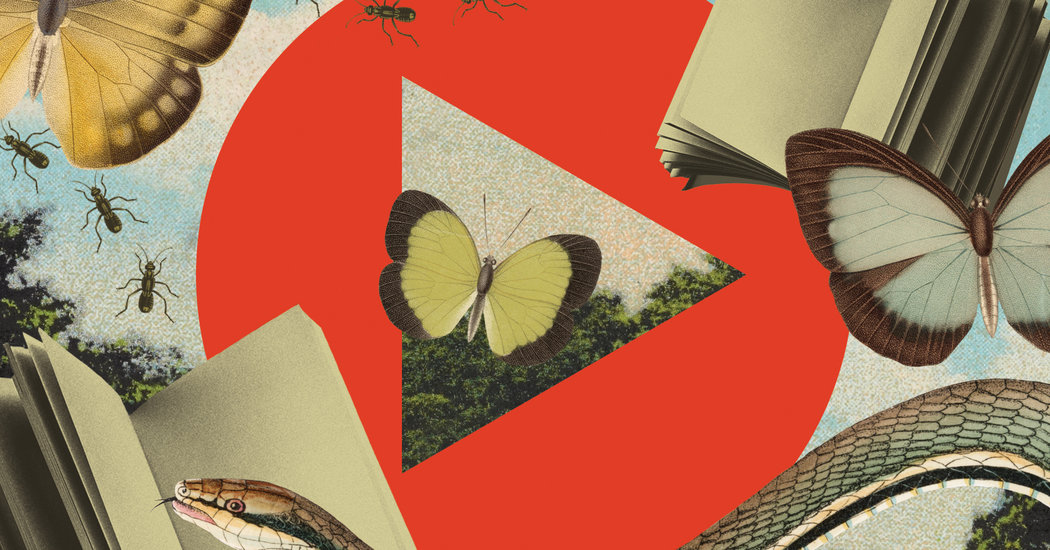
El Espace is a column dedicated to news and culture relevant to Latinx communities. Expect politics, arts, analysis, personal essays and more. ¿Lo mejor? It’ll be in Spanish and English, so you can pass it on to your tía, your primo Lalo or anyone else (read: everyone).
When Netflix announced this month that it had bought the rights to Gabriel García Márquez’s “One Hundred Years of Solitude,” I immediately thought of the butterflies.
I first read the novel in high school in Colombia, where I grew up, and the book’s signature swarm of yellow butterflies has stuck with me ever since. In the story, the fluttering beauties appear as symbols of love — unrequited and consummated — and of conflict, and the continuity of both of those things over generations.
In my own life, I’ve adopted them as symbols of strength. Yellow butterflies are accents in my apartment décor, and when I finished college, I put butterfly decals on my graduation cap. They make me proud of being Colombian; they are a reminder that my culture does not need to be reduced to the history of drug wars and violence.
But how would the butterflies be incorporated into the Netflix series, I wondered, with the subtly and grace of their appearances in the book? Would it be cheesy or overly symbolic?
These are the kinds of questions many of fans are asking about the future TV adaptation. This will be the first time the novel, published in 1967, will be adapted for the screen — but it’s not for lack of interest. Gabriel García Márquez’s son, Rodrigo García, who will be an executive producer on the project along with his brother Gonzalo, told The Times that his father, who died in 2014, had received many offers over the years to adapt the book for film. But he had never agreed to it, worrying that “One Hundred Years of Solitude” would not translate well or fit within a single movie.
The Netflix deal means the narrative can be serialized. But there are bigger storytelling challenges inherent to the project. One of the those is that the book doesn’t actually have much dialogue, said Álvaro Santana-Acuña, an assistant professor of sociology at Whitman College and scholar of García Márquez’s work. The dialogue, as well as the plot and the characters’ development, are funneled through the book’s omnipresent narrator. Santana-Acuña added that the beauty of the story is also García Márquez’s use of magical realism, as well as how sensorial the novel is.
“The story contains a lot of smells, sounds and even touch. How do you capture something as simplistic but important to Mr. García Márquez’s work like heat? How do you capture emotions like solitude?” Santana-Acuña said.
And yet: There are very few shows that tell Latino and Latin American stories, and even fewer are actually told by Latinos. The success of Alfonso Cuarón’s “Roma” shows that people all over the world can resonate with our stories.
“This is a chance to show another vision, another version of Colombia,” said Felipe Restrepo Pombo, a Colombian journalist and author who worked with García Márquez. He notes that while there is violence in “One Hundred Years of Solitude,” it predates drug trafficking. “I would hope that the adaptation would center on the historical side of ‘One Hundred Years of Solitude,’ on the stories of the characters,” he said.
When García Márquez sat down to write the novel in the early 1960s, Latin America was going through it. Many countries in the region were struggling with economic instability, political violence and the rise of dictatorships. The author wanted to capture the upheaval of the time, while also offering a glimmer of hope for growth. Cue the creation of Macondo.
The fictional town of the novel is somewhat rural, on an island in the middle of a river near the Colombian coast in the Ciénaga region. Over generations, it changes and grows — getting drab updates to its colorful architecture when the banana company arrives, reminding readers of the fundamental changes that came to Latin America with many real, sinister colonial entities.
Every time I read the book, I get wrapped up in its colloquialisms and the little cultural cues that don’t have to be explained. It taps into a need to be part of a history larger than the Colombia I know today.
“It’s such a particular thing that Mr. García Márquez created,” said Restrepo Pombo. “It’s a very true Latin American spirit. Adapting that to a screen will be very complicated unless you know and understand that spirit well.”
Despite my worries, I’m very excited for the Netflix series. Colombian culture is resilient, and it glows a beautiful shade of golden yellow reminiscent of García Márquez’s butterflies. I want that deep love, which is present in the novel and among Colombian people, for our country and each other, to be shared with whoever watches the series. I just hope the show gets the particular shade of yellow right.
La Ñapa
?Over the last week, Latinos have been mourning the loss of Netflix’s “One Day at a Time” on social media, rallying behind one hashtag: #SaveODAAT. It’s unclear what the fate of the show will be, but fans are not giving up. In our Opinion pages, the journalist Vanessa Erazo wrote about why the move hurts — particularly in light of the success of “Roma.”
⚕️Also in Opinion, Vanessa Barbara asks: If Latin America loves its mothers, why is obstetric violence normalized across the region?
?Listen to Zoe Saldana read a Modern Love story by a woman losing her mother to dementia.
Do you have suggestions for El Espace? Want to receive it as a newsletter? Let me know: elespace@nytimes.com







